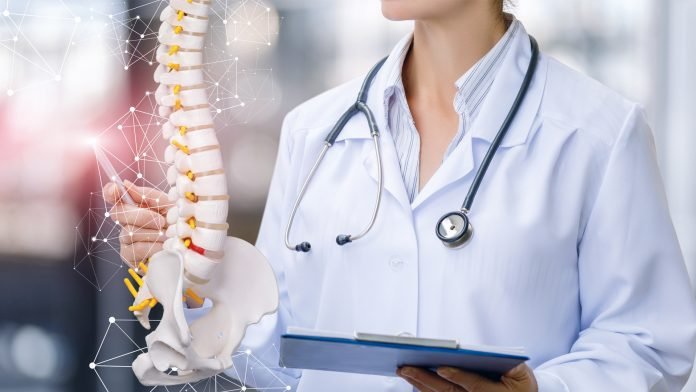Emerging AI Tech in Spinal Care
October 03, 2023 | Tuesday | Views
Populations in many low- and middle-income countries often have limited or no access to conventional healthcare resources or dedicated spinal health professionals
Image credit: shutterstock
Low back and neck pain or spinal pain are considered the leading causes of years lived with disability in most countries and age groups. Individuals with chronic low back pain have been shown to experience more difficulty in managing their health, particularly in utilising health information on optimising lifestyle habits. Another study says that functional disability, cognitive impairment and mental health conditions are strongly associated with spinal pain.
The lower back comprises the lumbar spine, which is formed by vertebral bones, intervertebral discs, nerves, muscles, ligaments, and blood vessels. The spinal cord ends at the top of the lumbar spine, and the remaining nerve roots, called the cauda equina, descend down the remainder of the spinal canal. While the lumbar spine is sturdy and resilient, it is subject to a high degree of stress and loads, which causes various problems, resulting in pain.
According to experts, the prevalence rate of lower back pain in the Indian population is higher as compared to global and other ethnic populations especially in women, rural population and elementary workers. The estimated prevalence of lower back pain in India is reported to range between 42 and 83 per cent of the total population. Recent evaluated data of 1355 young Indian administrative service aspirants and medical postgraduate aspirants, lower back pain prevalence was found to be 42.4 per cent per year and 22.8 per cent per week in young Indian adults aged 18 to 35 years.
As a result, experts in India have recommended the G20 countries for introducing National Spine Care Programmes, to reduce the numbers of people suffering from spine related ailments.
While there is a great need to focus on spine care, especially in India and other developing countries, experts are currently exploring the role of artificial intelligence (AI) for spinal care. One of the most promising applications of AI in back health lies in its ability to assist with early detection and diagnosis of spinal conditions. Machine learning algorithms can analyse radiological images to identify patterns that might be overlooked by the human eye, helping to detect issues such as disc degeneration, spinal stenosis, or fractures early on.
For instance, researchers in Canada are using AI to develop a data-driven scoring tool to assess spine motor dysfunction. On the other hand, Brigham Young University researchers in the US are deploying AI for pinpointing causes of back pain and helping prescribe patients with treatments that will help.
Pune-based health tech startup DeepTek holds one more example. It has developed a product called DeepSpine - an AI powered lumbar spine quantification and metrics tool designed to analyse MRI lumbar spine images. The tool was launched at the Radiological Society of North America (RSNA) annual meeting in Chicago, USA earlier this year.
According to the American College of Radiologists, lumbar spine MRI is the preferred imaging modality to rule out causes of complicated lower back pain and to decide whether conservative or invasive therapeutic approaches should be considered. Subsequently, the number of MRI studies of the lumbar spine has been rising over the last decades at a much higher rate than the number of trained radiologists who could adequately interpret the MR images, which is a major challenge.
Populations in many low- and middle-income countries often have limited or no access to conventional healthcare resources or dedicated spinal health professionals. Supporting populations and communities in self-managing their conditions is therefore paramount. Even in high-income countries, back pain afflicts millions of people resulting in an enormous impact on the healthcare industry and the economy. Effective management and prevention are therefore key, and this year’s World Spine Day on October 16 calls for greater global commitment to tackling spinal pain and disability by governments, communities, and public health bodies.
Dr Manbeena Chawla
Executive Editor
(manbeena.chawla@mmactiv.com)










